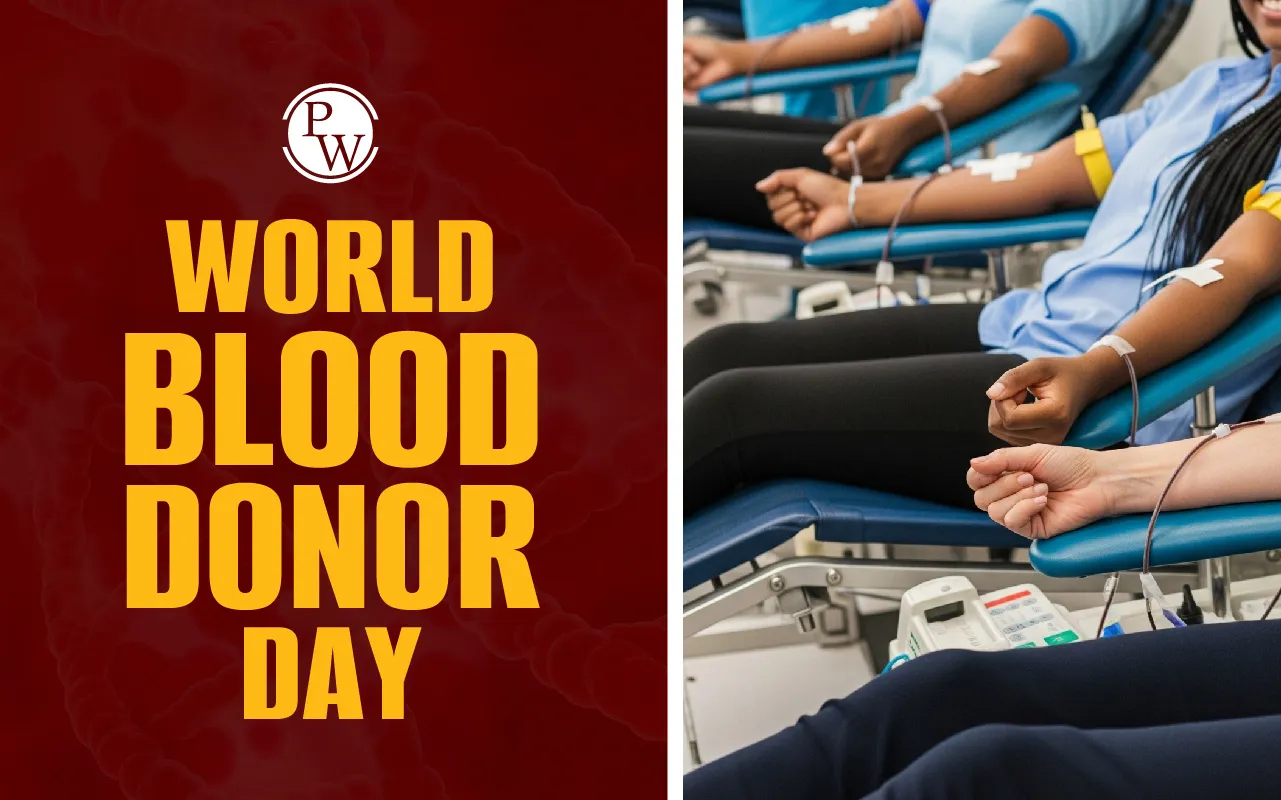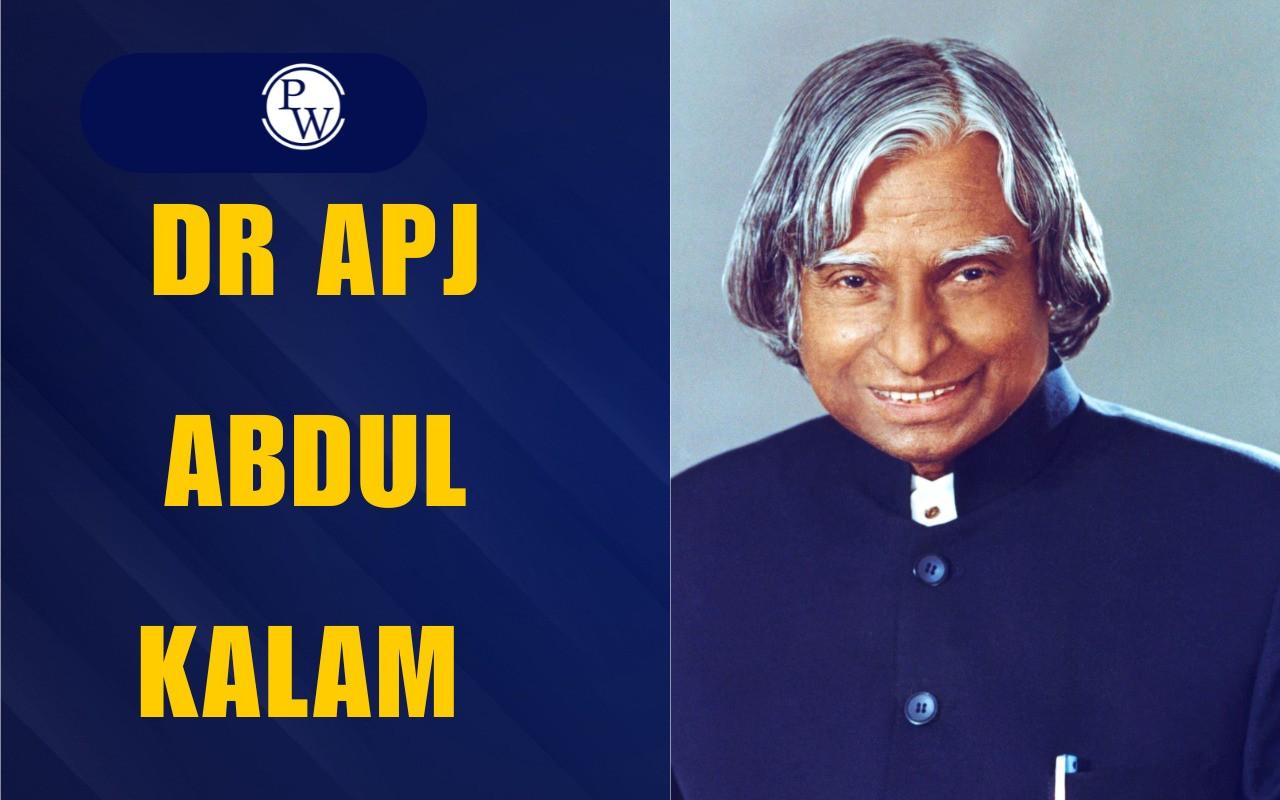

World Blood Donor Day 2025 will be observed on June 14th to recognize and thank voluntary blood donors worldwide. This day highlights the lifesaving impact of blood donation and promotes solidarity and community spirit in ensuring a reliable and safe blood supply for all. The World Blood Donor Day 2025 campaign will raise awareness about the importance of safe blood donation and the need to strengthen national blood donation programs globally.
World Blood Donor Day 2025
World Blood Donor Day is celebrated globally every year on 14 June. In 2025, it falls on Saturday, 14 June. It honours the millions of volunteer, unpaid blood donors who give their time and effort for others. Their generosity saves lives, strengthens health systems, and brings hope. Communities, health organisations, and governments unite to say “thank you” and encourage new donors.
| World Blood Donor Day 2025 Overview | |
| Date | 14 June 2025 |
| Theme | Give blood, give hope: together we save lives |
| Observed By | World Health Organization (WHO), national health bodies, voluntary donors worldwide |
| Purpose | Raise awareness about the need for safe blood, thank donors, and promote regular donation |
| Significance | Recognizing voluntary donors, promoting solidarity, ensuring a stable blood supply |
| Inception Year | 2004 (official annual event by WHO since 2005) |
| WHO Campaign | Every donation is a lifeline—one unit of blood can save up to three lives |
| Activities | Donor appreciation events, awareness campaigns, sharing stories, workshops, social media |
World Blood Donor Day 2025 Theme
The World Blood Donor Day 2025 theme is “Give blood, give hope: together we save lives.” This message emphasizes that each blood donation offers more than just medical help; it brings hope to patients, families, and communities. It also promotes unity, encouraging collaboration among donors, healthcare providers, and governments to ensure safe and steady access to blood supplies across the globe.
History of World Blood Donor Day
World Blood Donor Day was first launched in 2004 through a joint initiative by the World Health Organization (WHO), the International Federation of Red Cross and Red Crescent Societies, the International Federation of Blood Donor Organizations, and the International Society of Blood Transfusion.
It became an official WHO event in 2005, held annually on June 14 to honor the birth of Karl Landsteiner, the scientist who discovered blood groups. Since its inception, the day has featured different themes reinforcing the importance of voluntary blood donation and global solidarity.
How Does Donating Blood Save Lives?
Donating blood saves lives by providing essential support in medical situations where blood or blood components are critically needed. Here's how it makes a direct impact:
-
A single blood donation can potentially save up to three lives, as it can be separated into red cells, plasma, and platelets.
-
Blood transfusions are essential for emergencies, surgeries, cancer treatments, childbirth complications, and chronic conditions like thalassemia and sickle cell disease.
-
Regular donations help healthcare systems stay strong during outbreaks, natural disasters, and medical emergencies, ensuring blood is available when needed most.
-
Donating takes just 10–15 minutes, but it provides long-term benefits.
Eligibility Criteria for Blood Donation
Here is the WHO eligibility criteria for blood donation, along with the national guidelines for India:
| Criteria | Requirements | Rule in India |
| Age | 18–65 years | Same, 16–17 allowed in some cases with consent and medical clearance. |
| Weight | At least 50 kg | Same for 450 ml donations. 45 kg allowed for 350 ml ±10% donations. |
| General Health | Must be in good health at the time of donation | Pulse: 50–100 bpm, regularBlood Pressure: Systolic 100–180, Diastolic 50–100 mm HgBody Temperature: ≤37.5°C |
| Tattoos/Piercing | 6-month deferral after procedure | No recent tattoos (within 6 months) |
| Donation Interval | 3 months | 3 months (men), 4 months (women) |
| Haemoglobin Level | Minimum: 12.0 g/dl (females), 13.0 g/dl (males) | Tested at the donation site. |
| Travel | Temporary deferral if traveled to areas with malaria, dengue, or Zika | vCJD-related travel history may lead to longer or permanent deferral. |
| Risky Behaviours | Permanent deferral: HIV positive or injected recreational drugs | Not eligible (history of intravenous drug use or unprotected sex) |
| Pregnancy & Breastfeeding | At least 9 months after pregnancy + 3 months after baby is weaned | Not eligible |
Myths and Facts About Blood Donation
Here are some common myths about blood donation and the facts that set them straight:
| Myth | Fact |
| Donating blood is painful. | Most donors only feel a quick pinch from the needle; there's no significant pain during the process. |
| It takes a long time to donate blood. | The donation itself takes about 8–10 minutes; the full process takes around an hour. |
| I can't donate if I have tattoos or piercings. | If done with sterile, single-use equipment at a licensed facility, you can donate after a short wait (e.g., 6 months in India). |
| Only people with rare blood types should donate. | All blood types are needed. Common types are in high demand; rare types are crucial for matching specific patients. |
| I can’t donate if I’m on medication. | Most medications do not disqualify you. The underlying condition may be more relevant than the medication itself. |
| Donating blood lowers your immunity or makes you sick. | Blood donation does not affect immunity or make you sick. Your body replenishes blood quickly. |
| Blood can be stored forever, so there's no urgent need to donate. | Blood has a limited shelf life (about 35 days for whole blood), so regular donations are essential. |
| I can only donate once a year. | You can donate whole blood every 8 weeks (56 days) if you’re healthy. |
| Donating blood causes your body to overproduce blood cells. | Your body naturally replenishes blood but does not overproduce cells beyond normal levels. |
Blood Donor Group
Blood donor group refers to the blood type of an individual who donates blood. The compatibility of blood groups is crucial for safe transfusions. It is determined by the presence or absence of specific antigens (A, B, and Rh factor) on the surface of red blood cells. There are four main blood groups under the ABO system:
-
A
-
B
-
AB
-
O
| Donor Blood Group | Can Donate To | Can Receive From |
| O− | All groups | O− |
| O+ | O+, A+, B+, AB+ | O+, O− |
| A− | A−, A+, AB−, AB+ | A−, O− |
| A+ | A+, AB+ | A+, A−, O+, O− |
| B− | B−, B+, AB−, AB+ | B−, O− |
| B+ | B+, AB+ | B+, B−, O+, O− |
| AB− | AB−, AB+ | AB−, A−, B−, O− |
| AB+ | AB+ | All groups |
Universal Blood Donor Group
The O negative (O−) blood group is considered the true universal donor because their red blood cells lack A, B, and Rh antigens, making them compatible with any recipient in emergencies or when the recipient’s blood type is unknown.
Universal Recipient Blood Group
AB positive (AB+) individuals are universal recipients, as they can receive blood from any group due to the absence of anti-A, anti-B, and anti-Rh antibodies
National Blood Policy
India introduced its National Blood Policy in 2002 to build a strong and safe blood transfusion system across the country. Here are its key features:
-
Ban on Professional Donation: Paid blood donation was banned after the 1996 Supreme Court ruling to promote voluntary donation and improve safety.
-
Regulatory Oversight: The National Blood Transfusion Council (NBTC) leads policy, supported by State Blood Transfusion Councils (SBTCs). CDSCO and DCGI regulate blood bank licensing and quality.
-
Mandatory Testing: All blood donations are screened for HIV, Hepatitis B & C, Syphilis, and Malaria to ensure transfusion safety.
-
Standardization & Quality: National standards and technical manuals guide blood centers; the National External Quality Assessment (EQA) Program is expanding nationwide.
-
Modernization Initiatives: Emphasis on blood component therapy (red cells, plasma, platelets) over whole blood to optimize use and patient outcomes.
-
Nucleic Acid Testing (NAT): Expanded NAT facilities enhance early detection of infections, improving blood safety.
- Infrastructure Development: Plans for advanced capital blood centers in every state with modern labs (NAT, molecular, HLA) to centralize and upgrade blood banking.
World Blood Donor Day 2025 Campaign
WHO’s 2025 campaign focuses on five key objectives:
-
Thank the volunteer donors
-
Attract new and repeat donors
-
Promote solidarity and community values
-
Advocate for stronger national blood programs and funding
-
Engage youth and local organisations
This campaign will raise global awareness about the importance of safe, voluntary blood donation, inspire more people to donate regularly, and encourage governments to invest in sustainable blood services to save lives worldwide.
To sum up, World Blood Donor Day 2025 is a powerful reminder that small acts of kindness can make a big difference. By donating blood, you help save lives and strengthen our healthcare system.
Explore UPSC courses by Physics Wallah to learn more about health issues and science for UPSC preparation!
World Blood Donor Day 2025 FAQs
What is the date of World Blood Donor Day 2025?
What is the theme of World Blood Donor Day 2025?
Why is O negative the universal donor?
What are the rules for donating blood in India?
Why celebrate World Blood Donor Day?

UPSC Coaching











